Category: Archives
Li-Young Lee Presents Divinity As Spirit And Matter
Ed Simon at Poetry Magazine:
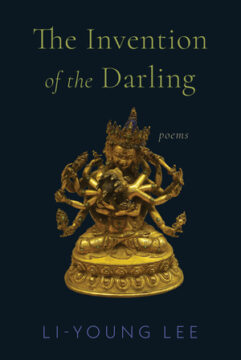 Because the likelihood of Li Bai dying from simple infirmity in 762 isn’t as strange and beautiful as the traditional story of his demise—that he drowned in the Yangtze River while drunkenly trying to embrace the moon’s reflection—the apocryphal tale is to be preferred. The greatest of classical Chinese poets deserves a death commensurate with his wild verse. Dying because he wished to possess the moon has about it the necessary resonance of parable: this is what the mystic is willing to do to merge with the infinite. “The birds have vanished down the sky. / Now the last cloud drains away,” Li Bai writes in the first of two couplets of “Zazen on Ching-t’ing Mountain” as translated by Sam Hamill, concluding: “We sit together, the mountain and me, / until only the mountain remains.”
Because the likelihood of Li Bai dying from simple infirmity in 762 isn’t as strange and beautiful as the traditional story of his demise—that he drowned in the Yangtze River while drunkenly trying to embrace the moon’s reflection—the apocryphal tale is to be preferred. The greatest of classical Chinese poets deserves a death commensurate with his wild verse. Dying because he wished to possess the moon has about it the necessary resonance of parable: this is what the mystic is willing to do to merge with the infinite. “The birds have vanished down the sky. / Now the last cloud drains away,” Li Bai writes in the first of two couplets of “Zazen on Ching-t’ing Mountain” as translated by Sam Hamill, concluding: “We sit together, the mountain and me, / until only the mountain remains.”
This is startlingly religious verse. The disintegration of the soul, the extinguishing of the ego, the snuffing of the person is required so that one becomes a part of the cosmos’ warp and weft. It’s erotic verse as well, as only the truest of devotional poems can be, because it presupposes the desire to lose oneself in another, to twist into something greater.
more here.
Do cutting-edge CAR-T-cell therapies cause cancer?
Cassandra Willyard in Nature:
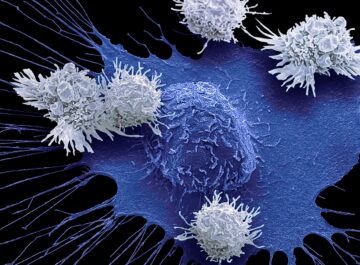 US drug regulators dropped a bombshell in November 2023 when they announced an investigation into one of the most celebrated cancer treatments to emerge in decades. The US Food and Drug Administration (FDA) said it was looking at whether a strategy that involves engineering a person’s immune cells to kill cancer was leading to new malignancies in people who had been treated with it.
US drug regulators dropped a bombshell in November 2023 when they announced an investigation into one of the most celebrated cancer treatments to emerge in decades. The US Food and Drug Administration (FDA) said it was looking at whether a strategy that involves engineering a person’s immune cells to kill cancer was leading to new malignancies in people who had been treated with it.
Bruce Levine, an immunologist at the University of Pennsylvania Perelman School of Medicine in Philadelphia who helped to pioneer the approach known as chimeric antigen receptor (CAR) T-cell therapy, says he didn’t hear the news until a reporter asked him for comments on the FDA’s announcement.
“Better get smart about it quick,” he remembers thinking. Although the information provided by the FDA was thin at the time, the agency told reporters that it had observed 20 cases in which immune-cell cancers known as lymphomas had developed in people treated with CAR T cells. Levine, who is a co-inventor of Kymriah, the first CAR-T-cell therapy to be approved, started jotting down questions. Who were these patients? How many were there? And what other drugs had they received before having CAR-T-cell therapy?
More here.
Tuesday, April 30, 2024
No one buys books
Elle Griffin at The Elysian:
 In my essay “No one will read your book,” I said that publishing houses work more like venture capitalists. They invest small sums in lots of books in hopes that one of them breaks out and becomes a unicorn, making enough money to fund all the rest.
In my essay “No one will read your book,” I said that publishing houses work more like venture capitalists. They invest small sums in lots of books in hopes that one of them breaks out and becomes a unicorn, making enough money to fund all the rest.
Turns out, they agree!
Every year, in thousands of ideas and dreams, only a few make it to the top. So I call it the Silicon Valley of media. We are angel investors of our authors and their dreams, their stories. That’s how I call my editors and publishers: angels… It’s rather this idea of Silicon Valley, you see 35 percent are profitable; 50 on a contribution basis. So every book has that same likelihood of succeeding.
— Markus Dohle, CEO, Penguin Random House
Those unicorns happen every five to 10 years or so.
More here.
Does AI Know What an Apple Is? Ellie Pavlick Aims to Find Out
John Pavlus in Quanta:
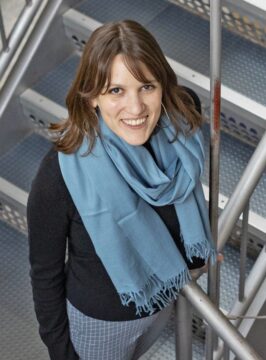 Start talking to Ellie Pavlick about her work — looking for evidence of understanding within large language models (LLMs) — and she might sound as if she’s poking fun at it. The phrase “hand-wavy” is a favorite, and if she mentions “meaning” or “reasoning,” it’ll often come with conspicuous air quotes. This is just Pavlick’s way of keeping herself honest. As a computer scientist studying language models at Brown University and Google DeepMind, she knows that embracing natural language’s inherent mushiness is the only way to take it seriously. “This is a scientific discipline — and it’s a little squishy,” she said.
Start talking to Ellie Pavlick about her work — looking for evidence of understanding within large language models (LLMs) — and she might sound as if she’s poking fun at it. The phrase “hand-wavy” is a favorite, and if she mentions “meaning” or “reasoning,” it’ll often come with conspicuous air quotes. This is just Pavlick’s way of keeping herself honest. As a computer scientist studying language models at Brown University and Google DeepMind, she knows that embracing natural language’s inherent mushiness is the only way to take it seriously. “This is a scientific discipline — and it’s a little squishy,” she said.
More here.
Yanis Varoufakis: The Age of Cloud Capital
Yanis Varoufakis in Persuasion:
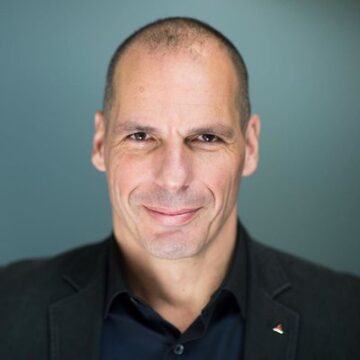 If we do pay attention, it is not hard to see that capital’s mutation into what I call cloud capital has demolished capitalism’s two pillars: markets and profits. Of course, markets and profits remain ubiquitous—indeed, markets and profits were ubiquitous under feudalism too—they just aren’t running the show anymore. What has happened over the last two decades is that profit and markets have been evicted from the epicenter of our economic and social system, pushed out to its margins, and replaced. With what? Markets, the medium of capitalism, have been replaced by digital trading platforms which look like, but are not, markets, and are better understood as fiefdoms. And profit, the engine of capitalism, has been replaced with its feudal predecessor: rent. Specifically, it is a form of rent that must be paid for access to those platforms and to the cloud more broadly. I call it cloud rent. As a result, real power today resides not with the owners of traditional capital, such as machinery, buildings, railway and phone networks, industrial robots. They continue to extract profits from workers, from waged labor, but they are not in charge as they once were. They have become vassals in relation to a new class of feudal overlord, the owners of cloud capital. As for the rest of us, we have returned to our former status as serfs, contributing to the wealth and power of the new ruling class with our unpaid labor—in addition to the waged labor we perform, when we get the chance.
If we do pay attention, it is not hard to see that capital’s mutation into what I call cloud capital has demolished capitalism’s two pillars: markets and profits. Of course, markets and profits remain ubiquitous—indeed, markets and profits were ubiquitous under feudalism too—they just aren’t running the show anymore. What has happened over the last two decades is that profit and markets have been evicted from the epicenter of our economic and social system, pushed out to its margins, and replaced. With what? Markets, the medium of capitalism, have been replaced by digital trading platforms which look like, but are not, markets, and are better understood as fiefdoms. And profit, the engine of capitalism, has been replaced with its feudal predecessor: rent. Specifically, it is a form of rent that must be paid for access to those platforms and to the cloud more broadly. I call it cloud rent. As a result, real power today resides not with the owners of traditional capital, such as machinery, buildings, railway and phone networks, industrial robots. They continue to extract profits from workers, from waged labor, but they are not in charge as they once were. They have become vassals in relation to a new class of feudal overlord, the owners of cloud capital. As for the rest of us, we have returned to our former status as serfs, contributing to the wealth and power of the new ruling class with our unpaid labor—in addition to the waged labor we perform, when we get the chance.
More here.
Two Salman Rushdie Interviews
How to Think with Robert Pogue Harrison
Andrea Capra at The Book Haven:
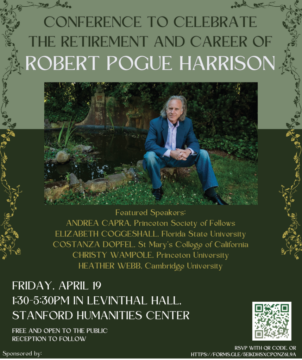 It is today my belief that once ordinary language is laughed out of the room, philosophical theories are no longer held responsible at all to the ways we actually speak and actually live. And aren’t the humanities ultimately for a good part connected to how we actually speak and live? To me, it is clear that the descriptions of human life we find in the novels of Samuel Beckett or in the poetry of Giacomo Leopardi are not mere entertainment. In my view, and among other things, they teach us to perceive and describe what goes on in social and individual life. To echo what Hilary Putnam once said, contempt for ordinary language is, at bottom, contempt for the humanities.
It is today my belief that once ordinary language is laughed out of the room, philosophical theories are no longer held responsible at all to the ways we actually speak and actually live. And aren’t the humanities ultimately for a good part connected to how we actually speak and live? To me, it is clear that the descriptions of human life we find in the novels of Samuel Beckett or in the poetry of Giacomo Leopardi are not mere entertainment. In my view, and among other things, they teach us to perceive and describe what goes on in social and individual life. To echo what Hilary Putnam once said, contempt for ordinary language is, at bottom, contempt for the humanities.
Robert’s work – in which I also prominently include his advising role – is a reminder that thinking and living are intimately connected. I am not sure he would speak of “ordinary language” à la Wittgenstein, Austin, or Cavell in relation to this connection. But so what? In the end, this is my way of thinking with Robert – not of thinking like Robert. An intellectual mentor in the trust sense of the term is someone who seeks to develop the voice of his mentee – not someone who wishes to see his own voice replicated.
more here.
One Gene with a Domino Effect on Social Behavior
Kamal Nahas in The Scientist:
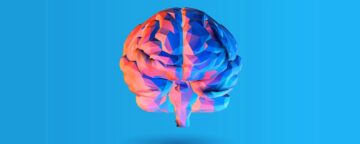 Transcription factors that tune the expression of multiple genes could be key players in regulating behavior, but scientists need to scout for them. Peter Hamilton, a neuroscientist at Virginia Commonwealth University, has contributed to this search for years, especially in the context of social behavior studies. In 2019, he and his colleagues identified a transcription factor (TF) that correlated with stress resilience in rodents.1 In a recent study, Hamilton and his team discovered that the same TF orchestrates social behaviors in mice and unexpectedly links the brain and immune system.2 Their findings, reported in Translational Psychiatry, shed light on the genetics underpinning social conduct in mammals, laying the groundwork to identify genes contributing to mental illness.
Transcription factors that tune the expression of multiple genes could be key players in regulating behavior, but scientists need to scout for them. Peter Hamilton, a neuroscientist at Virginia Commonwealth University, has contributed to this search for years, especially in the context of social behavior studies. In 2019, he and his colleagues identified a transcription factor (TF) that correlated with stress resilience in rodents.1 In a recent study, Hamilton and his team discovered that the same TF orchestrates social behaviors in mice and unexpectedly links the brain and immune system.2 Their findings, reported in Translational Psychiatry, shed light on the genetics underpinning social conduct in mammals, laying the groundwork to identify genes contributing to mental illness.
The neural regulator that Hamilton identified in his original study belongs to the largest TF family in mammals, called the Krüppel-associated box (KRAB) zinc finger proteins (ZFP).3 Its members directly regulate genes and repress transposable elements—DNA sequences that regulate other genes.4,5 In the new study, Hamilton and his team explored how the TF in question, ZFP189, affects stress in mice by creating a synthetic version with flipped functionality; they swapped out its repressive domain for an activator one to disrupt its inhibitory effects on transposable elements.
More here.
Deconstruction And Critique
Audrey Wasser at nonsite:
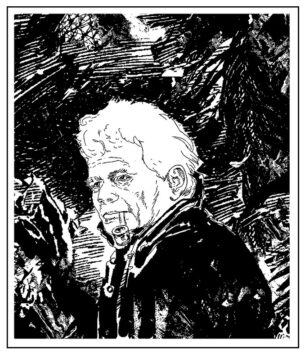 What would it mean to subtract context from writing, in each and every sense of “context” that Derrida proposes here? And would this be a remotely helpful exercise for thinking about the relation between text and context in literary studies? It’s hard to see how it could be. Even the strongest statements I can think of urging critics to turn away from context—take Rita Felski’s essay “Context Stinks!,” the last chapter of her Limits of Critique, or Joseph North’s arguments against the historicist/contextualist paradigm in Literary Criticism: A Concise Political History—even these apparently hardline positions in no way advocate for a total absenting of every form of contextual consideration. Rather, each seeks to limit appeals to certain contexts in order to boost the visibility of others. North, for example, seeks to challenge the priority placed on historical scholarship in order to shed light on present contexts of aesthetic education. For him, historical scholarship has become overly specialized and no longer realizes its vocation “to intervene in the ‘culture as a whole.’”4 Felski, for her part, wants to tamp down what she calls “fealty to the clarifying power of historical context” because she sees such fealty as engaging in a sort of one-upmanship of insight.
What would it mean to subtract context from writing, in each and every sense of “context” that Derrida proposes here? And would this be a remotely helpful exercise for thinking about the relation between text and context in literary studies? It’s hard to see how it could be. Even the strongest statements I can think of urging critics to turn away from context—take Rita Felski’s essay “Context Stinks!,” the last chapter of her Limits of Critique, or Joseph North’s arguments against the historicist/contextualist paradigm in Literary Criticism: A Concise Political History—even these apparently hardline positions in no way advocate for a total absenting of every form of contextual consideration. Rather, each seeks to limit appeals to certain contexts in order to boost the visibility of others. North, for example, seeks to challenge the priority placed on historical scholarship in order to shed light on present contexts of aesthetic education. For him, historical scholarship has become overly specialized and no longer realizes its vocation “to intervene in the ‘culture as a whole.’”4 Felski, for her part, wants to tamp down what she calls “fealty to the clarifying power of historical context” because she sees such fealty as engaging in a sort of one-upmanship of insight.
more here.
Derrida : The Documentary
The Stories We Tell About the End of the World
Mark Blacklock at Literary Review:
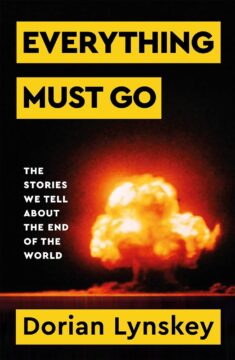 Evidently, the time is ripe for a survey of the branch of cultural production concerned with the end of the world. And yet, as Lynskey points out, tales have been told about it for as long as we’ve been doing story. J G Ballard, whose work is given rich and perceptive attention in the chapter ‘Catastrophe’, wrote in 1977: ‘I would guess that from man’s first inkling of this planet as a single entity existing independently of himself came the determination to bring about its destruction.’
Evidently, the time is ripe for a survey of the branch of cultural production concerned with the end of the world. And yet, as Lynskey points out, tales have been told about it for as long as we’ve been doing story. J G Ballard, whose work is given rich and perceptive attention in the chapter ‘Catastrophe’, wrote in 1977: ‘I would guess that from man’s first inkling of this planet as a single entity existing independently of himself came the determination to bring about its destruction.’
Lynskey’s previous book, The Ministry of Truth (2019), was an astute and well-received history of Orwell’s Nineteen Eighty-Four, considering both its genesis and its impact. In that work, he brought to bear the knowledge and insight he has acquired as a music critic and a commentator on politics. The influence of Orwell’s book was tracked through its many manifestations in popular culture – TV’s Big Brother and Room 101, to give just two examples.
more here.
Chronic inflammation is long lasting, insidious, dangerous. And you may not even know you have it
Marlene Cimons in The Washington Post:
Chronic inflammation begins without an apparent cause — and doesn’t stop. The immune system becomes activated, but the inflammatory response isn’t intermittent, as it is during an acute injury or infection. Rather, it stays on all the time at a low level. Experts think this may be the result of an infection that doesn’t resolve, an abnormal immune reaction or such lifestyle factors as obesity, poor sleep or exposure to environmental toxins. Over time, the condition can, among other things, damage DNA and lead to heart disease, cancer and other serious disorders.
More here.
Tuesday Poem
The Association of Man and Women
Whatever badness there was
sometimes
was not of us,
but between us.
Because there was goodness,
which felt like a sure base.
While badness felt only
like incidents upon it.
The badness was only
the way you and I needed to behave,
sometimes.
Not what we were.
The badness was only
a small,
transient,
insignificant
pain,
like the tiny, instant
pain
from the prick of a rose’s thorn,
taking joy,
for a second,
away from the fragrance of a rose.
by Peggy Freydberg
from Poems From the Pond
Hybrid Nation, Los Angeles, Ca.2013
Sunday, April 28, 2024
Why silence is not the absence of noise but its contrary twin
Jeannette Cooperman in The Common Reader:
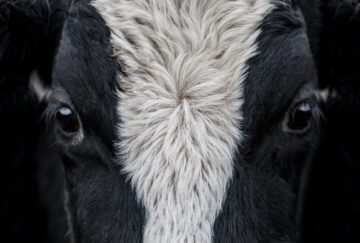 In need of silence, I booked a room at a Trappist monastery. The following Friday, I snuck out of work early and headed south, not realizing that Ava, Missouri, was four hours away, down at the border of Arkansas. I sped down the interstate, glided off the exit ramp—and got stuck behind a livestock trailer. For the next hour, as we crept along a narrow country road, the wide face of a brown and white cow gazed back at me. Its fuzzy ears stuck straight out, like they had been glued on at the last minute. Lashes curled above steady brown eyes that held a lifetime’s observations.
In need of silence, I booked a room at a Trappist monastery. The following Friday, I snuck out of work early and headed south, not realizing that Ava, Missouri, was four hours away, down at the border of Arkansas. I sped down the interstate, glided off the exit ramp—and got stuck behind a livestock trailer. For the next hour, as we crept along a narrow country road, the wide face of a brown and white cow gazed back at me. Its fuzzy ears stuck straight out, like they had been glued on at the last minute. Lashes curled above steady brown eyes that held a lifetime’s observations.
There was no way to pass that trailer. I know because I kept trying, agitated, for the first three miles. The cow watched. Where it was heading, how idyllic or ominous its destination, I had no idea; nor did the cow know. Sighing, I downshifted, resigning myself to lost time. The cow held my gaze. The future fell away.
Slowly, a calm stole over me. By the time the road widened, I had no desire to go around. The placid look on that cow’s face—wordless, accepting—had righted my universe.
More here.
Despite ‘hippie’ reputation, male bonobos fight three times as often as chimps, study finds
Anne J. Manning in The Harvard Gazette:
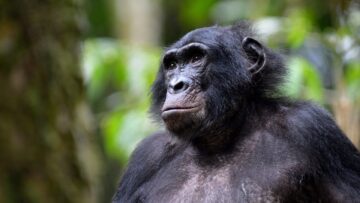 The endangered bonobo, the great ape of the Central African rainforest, has a reputation for being a bit of a hippie. Known as more peaceful than their warring chimpanzee cousins, bonobos live in matriarchal societies, engage in recreational sex, and display signs of cooperation both inside and outside their immediate social groups.
The endangered bonobo, the great ape of the Central African rainforest, has a reputation for being a bit of a hippie. Known as more peaceful than their warring chimpanzee cousins, bonobos live in matriarchal societies, engage in recreational sex, and display signs of cooperation both inside and outside their immediate social groups.
But this relaxed reputation isn’t quite reality, according to a new Harvard study in Current Biology. Researchers observing bonobos and chimps in their natural environments over roughly three years found that actual rates of aggressive acts were notably higher among male bonobos than among male chimps.
More here.
I’m a Jewish student at Yale, and here’s what everyone is getting wrong about the protests
Ian Berlin at CNN:
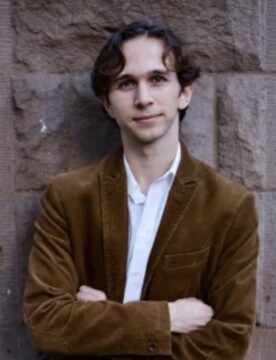 I do not deny that there has been a shocking and upsetting rise in antisemitism over the last few months, including several instances of antisemitism right at Yale and in New Haven. Last fall, one professor’s post on X (formerly Twitter) appearing to praise Hamas’ October 7th attack sparked a petition for her to be fired.
I do not deny that there has been a shocking and upsetting rise in antisemitism over the last few months, including several instances of antisemitism right at Yale and in New Haven. Last fall, one professor’s post on X (formerly Twitter) appearing to praise Hamas’ October 7th attack sparked a petition for her to be fired.
I have had countless painful conversations with close friends trying to explain to them how their rhetoric has at times minimized the killing and hostage-taking of Israeli Jews and how that language hurts their Jewish classmates, myself included.
But when people see pro-Palestinian protesters arrested at the same time as President Joe Biden and others are warning about a surge of antisemitism on college campuses, they apply the same tired framework — supposedly antisemitic pro-Palestine activists pitted against Jewish pro-Israel activists — to Yale. As a fourth-year Yale student, I find this characterization to be deeply frustrating, as it could not be further from the truth.
More here.
“My Own Life” by David Hume
From Hume Texts Online:
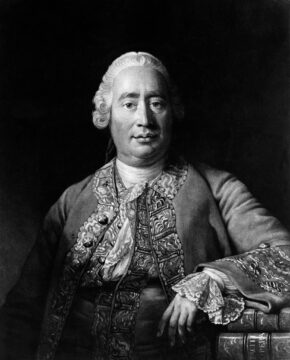
My family, however, was not rich, and being myself a younger brother, my patrimony, according to the mode of my country, was of course very slender. My father, who passed for a man of parts, died when I was an infant, leaving me, with an elder brother and a sister, under the care of our mother, a woman of singular merit, who, though young and handsome, devoted herself entirely to the rearing and educating of her children. I passed through the ordinary course of education with success, and was seized very early with a passion for literature, which has been the ruling passion of my life, and the great source of my enjoyments. My studious disposition, my sobriety, and my industry, gave my family a notion that the law was a proper profession for me; but I found an insurmountable aversion to every thing but the pursuits of philosophy and general learning; and while they fancied I was poring upon Voet and Vinnius, Cicero and Virgil were the authors which I was secretly devouring.
More here.
Colin Jost’s set at the White House correspondents’ dinner
Hunger and Home: A review of Dur e Aziz Amna’s American Fever
Julie Cadman-Kim in MQR:
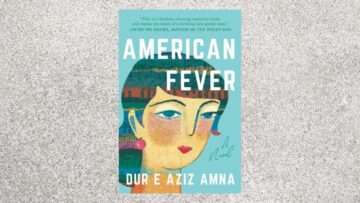 In Dur e Aziz Amna’s gorgeous debut, American Fever, readers can expect to find all the hallmarks of a bumpy adolescence—destructive confidence, crippling self-doubt, steamy crushes, social gaffes, obsession with looks and style, and pervasive loneliness. But within this jewel-box of a novel, these universal qualities unfold in a most unusual situation.
In Dur e Aziz Amna’s gorgeous debut, American Fever, readers can expect to find all the hallmarks of a bumpy adolescence—destructive confidence, crippling self-doubt, steamy crushes, social gaffes, obsession with looks and style, and pervasive loneliness. But within this jewel-box of a novel, these universal qualities unfold in a most unusual situation.
In late 2010, sixteen-year-old Hira is eager to leave Pakistan and begin a year-long exchange program in America. Only when she arrives in a woefully rural corner of the country, nothing quite measures up to her expectations. Hira’s host family seems to want little to do with her, her new high school is full of ignorant hayseeds, and she struggles even to get enough food to eat. To top it off, she’s falling in love with an older guy across the country, in New York, and carrying a dormant strain of tuberculosis. Underfed and way outside her comfort zone, she begins to deteriorate until her weakened immune system allows the virus to bloom, wreaking havoc not only on Hira, but also on the fragile community she’s built around herself.
All my life, I have observed a certain kind of person with baffled envy. The person who has never felt the desire to flee. I feel the least in common with this person, and yet I am endlessly fascinated by her. How can one be that content? Is she lucky, the draw of the universe birthing her in a place that fully aligns with her in temperament and ambition, or is she just complacent?
Throughout the novel, Hira must navigate complex cultural waters and a cloistered new reality in which self-preservation and personal growth are difficult to balance. She is expected to play ambassador, brush off xenophobic taunts, and feel grateful for all the United States has to offer, but the longer she spends in the U.S., the more she second-guesses exactly what she believes in and her decision to leave Pakistan in the first place. At the same time, she’s drawn more than ever to memories and ideals from home, the distance helping illuminate who she is and the magnitude of what she was so eager to leave behind.
More here.

 Most of us think of inflammation as the redness and swelling that follow a wound, infection or injury, such as an ankle sprain, or from overdoing a sport, “tennis elbow,” for example. This is “acute” inflammation, a beneficial immune system response that encourages healing, and usually disappears once the injury improves.
Most of us think of inflammation as the redness and swelling that follow a wound, infection or injury, such as an ankle sprain, or from overdoing a sport, “tennis elbow,” for example. This is “acute” inflammation, a beneficial immune system response that encourages healing, and usually disappears once the injury improves.